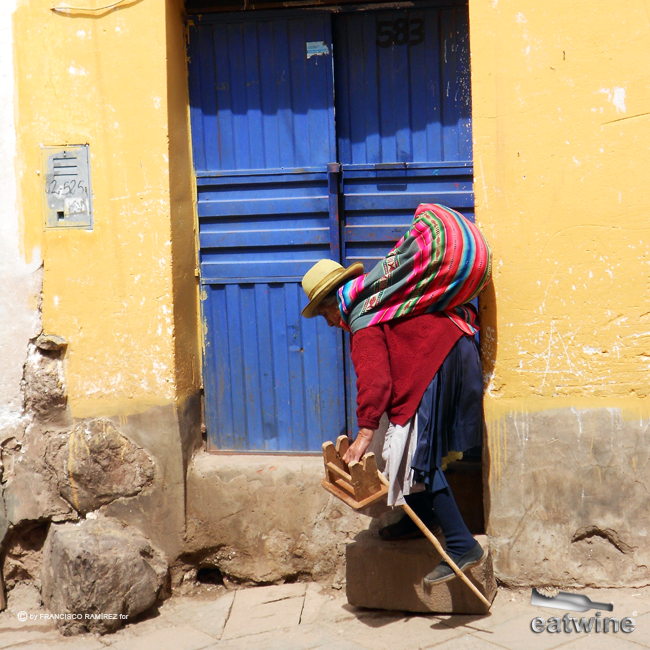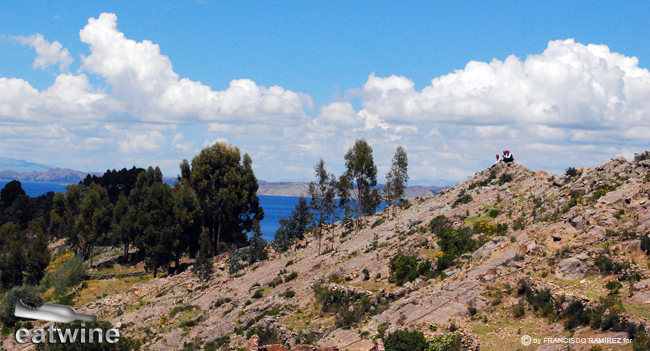One of the questions and travel concerns we consistently field from our guests is how to prepare for, and potentially cope with, altitude sickness when traveling in the Andes. While Cusco and the Inca’s Sacred Valley immediately come to mind, keep in mind that other areas of the Andes also have high(er) altitude like Lake Titicaca, Peru’s Colca Canyon, ski resorts in Chile, or even flying into Quito, Ecuador or La Paz, Bolivia.
What causes altitude sickness? At high altitudes, the air pressure is low so in a given breath of air, your body receives fewer oxygen molecules than it would at sea level. The body finds it difficult to function normally since it does not have as much oxygen readily available. Your metabolism slows, you tire easily walking or climbing stairs, your head can ache, and it can feel difficult to breathe. Scientists often deem this “altitude sickness” but I think it’s necessary to differentiate between mild symptoms of your body adapting and the tipping point of when it truly becomes Acute Mountain Sickness (AMS) and needs medical attention.
So let’s say you’re coming down on a trip to Peru with us and want to be sure you are well prepared to avoid altitude sickness, or soroche as the locals call it, for your short stint in Cusco, Sacred Valley, and Machu Picchu. First, keep in mind that altitude symptoms, or sickness, generally occur when ascent is rapid – usually short flights from low to high altitude airports. Thus, when you’re on the 1-hour flight from sea-level Lima to 11,000-ft. Cusco, obviously you can expect your body is going to need a day or so to adjust.
Here are tried and true tips that really work to avoid any headaches, literally, with altitude. If you follow these to a “T”, you’ll be golden.
1. Drink lots of water. Keep in mind that flying into Cusco/Arequipa/Puno, not only are these high altitude destinations but they are also extremely dry climates. You need to hydrate, hydrate, hydrate. Stick to only bottled, non-carbonated water and aim to drink at least 2-3 liters a day. Dehydration is the cause of many of the unfriendly effects of high altitude, so drink up. While luxury hotels always provide a couple bottles of complementary water, this may not suffice to keep you hydrated. Kiosks and stores sell larger bottles of 1.5-liter mineral water for about 2-3 soles (around US$1), a much better deal than your mini-bar.
2. Take every opportunity to use the bathroom. Since you’ll be drinking lots of water, you will probably need to find a restroom quite frequently. We suggest never passing on an opportunity to do so, since bathrooms in some areas can be few and far between (bushes, however, are always available). Toilet paper and soap are not always provided, so be sure to carry a supply of pocket tissues and hand sanitizer with you.
3. Move slowly. Just for today, and maybe tomorrow, please forget about working out. Your body is already working double-time to create more red blood cells to transport oxygen throughout your body. Is there really a need to stress it with additional physical activity? I think not.
4. Eat lightly. While Peru may be the culinary capital of South America, go easy upon arrival and avoid hard-to-digest foods like red meat, dairy, and fried foods, especially the first 24 hours. Stick to soups, vegetables, grains like rice or quinoa, and fish. Although the food is delicious, eat smaller portions than you normally would – especially at night and on your first day at high altitude. What happens if you overload your stomach? Your blood heads there and your body uses all its available energy to digest the food instead of working to transport oxygen and help you acclimate. Result? You feel even more sluggish and potentially bad.
5. Go easy on the booze. At dry, high altitudes, the main reason people feel awful is because they are dehydrated. Not only does alcohol dehydrate you, its effect is much stronger (one beer in the mountains will have the effect of three beers at sea level). If you can, stick to water the first day or sip your cerveza very slowly and re-hydrate with tons of water. For the rest of your time at high altitude, limit yourself to one or two glasses of alcohol daily. Your body will thank you.
6. Drink your tea. The traditional Peruvian remedy in the mountains for altitude is coca leaves. Typically people use the leaves to make tea called mate de coca, but you can also chew the leaf directly (suck on the leaf for a while and then spit it out). This will help your body cope with the change in altitude. Keep in mind that coca has high caffeine content so we suggest only consuming it in the morning. A better, caffeine free, choice is muña, or Andean Mint, which grows wild in the Andes. This can also be found in tea form and is a great digestive regulator and is not a stimulant. It also is a good for just about any digestive ailment (including stomach cramps, gas, and diarrhea) and is readily available in hotels and stores. Honestly, muña is Peru’s miracle tea. Drink it in copious amounts any time of the day or after meals. I buy it by the box in Cusco to bring home.
7. Medications. For those that are particularly prone to altitude sickness, there is a preventative medication that can be purchased with a prescription in the US before the trip, or over-the-counter at any pharmacy in Peru under its generic name. The brand name for the medication is Diamox (generic: acetazolamide). Diamox does have a few side effects: the sensation of tingly fingers, making carbonated drinks taste slightly metallic, and it’s a diuretic (so you’ll need to drink a lot of water). Despite this, if you are especially sensitive to altitude changes or have a history of altitude sickness, this drug can be extremely helpful. It is necessary to start taking Diamox 24 hours BEFORE your arrival in high altitude for it to have the desired effect. Another temporary option is the Oxishot that you can purchase in the Cusco Airport in baggage claim. This oxygen canister costs around US$10 with a mask. For those of you traveling with us, rest assured our vehicles also have oxygen as do the hotels (which is usually not necessary) and water available.
8. Acclimate low to high: Funny enough, many travelers think you go “up” to Machu Picchu when arriving in Cusco, but it’s just the opposite—you go down into the Andes. Cusco is situated at around 11,000 feet above sea level, Sacred Valley is at 8,500 feet above sea level (similar to Aspen, Colorado), and Machu Picchu is at 6,500 feet above sea level. Why is this important? We suggest, if possible, that upon arrival you first acclimate in the Sacred Valley and Machu Picchu before returning to Cusco. Giving your body those days at a lower altitude will make the transition easier and by the time you get to Cusco, you’ll already be acclimated. A similar approach is necessary if you are planning on traveling from Cusco to Lake Titicaca (11,000 to 14,000 feet above sea level). Do yourself a favor and never, ever fly directly into Juliaca (the nearest airport to Puno/Lake Titicaca) from Lima. That’s like landing on top of the Rockies’ highest peak. Gradually work up.
However you decide to cope (meds or not), please do not pysch yourself out about altitude sickness. It is wise to come prepared and take the necessary actions in order to allow our wise bodies to adjust to this transition in the best way possible. Get your strategy, get on that plane ready to have an amazing trip, and breathe easy.


















